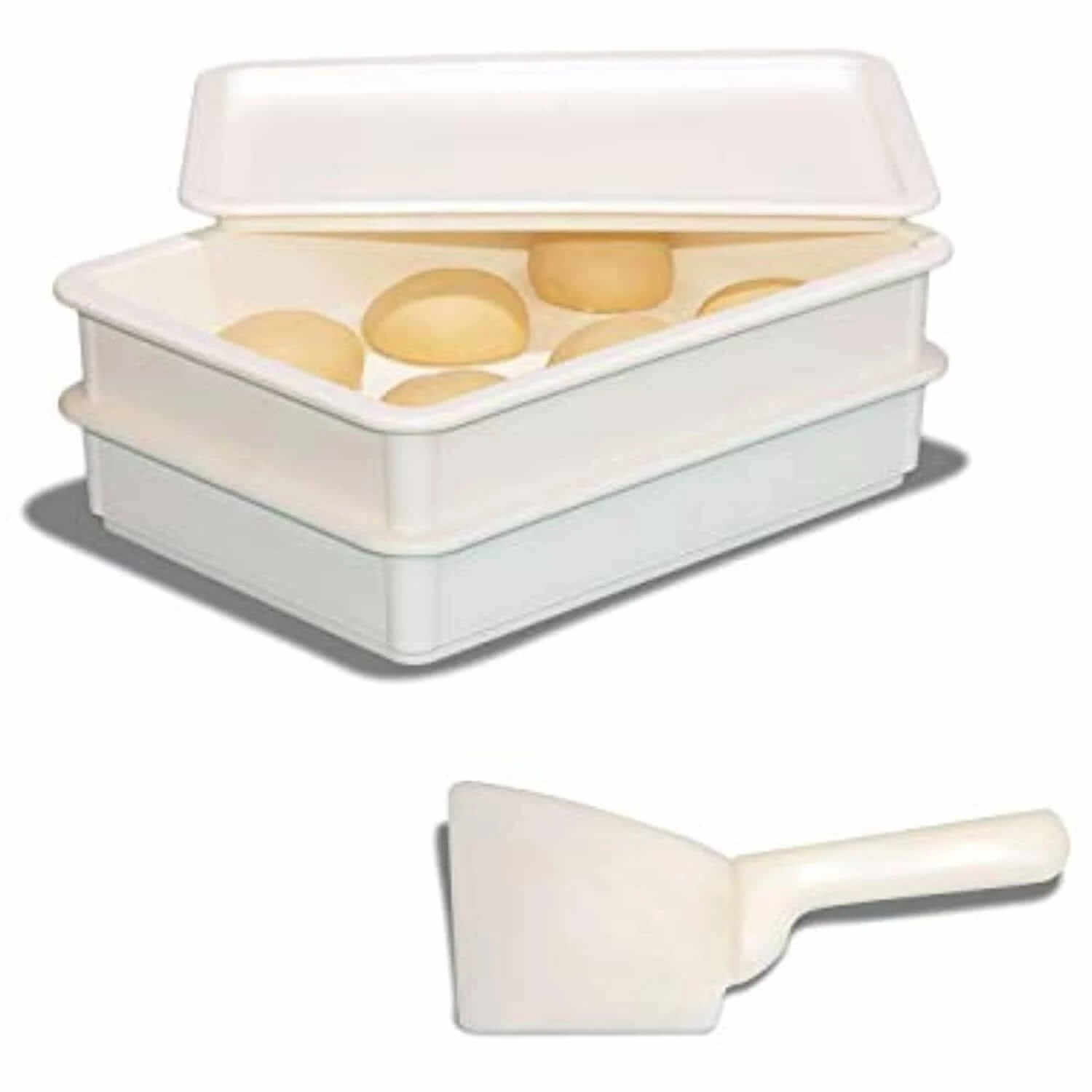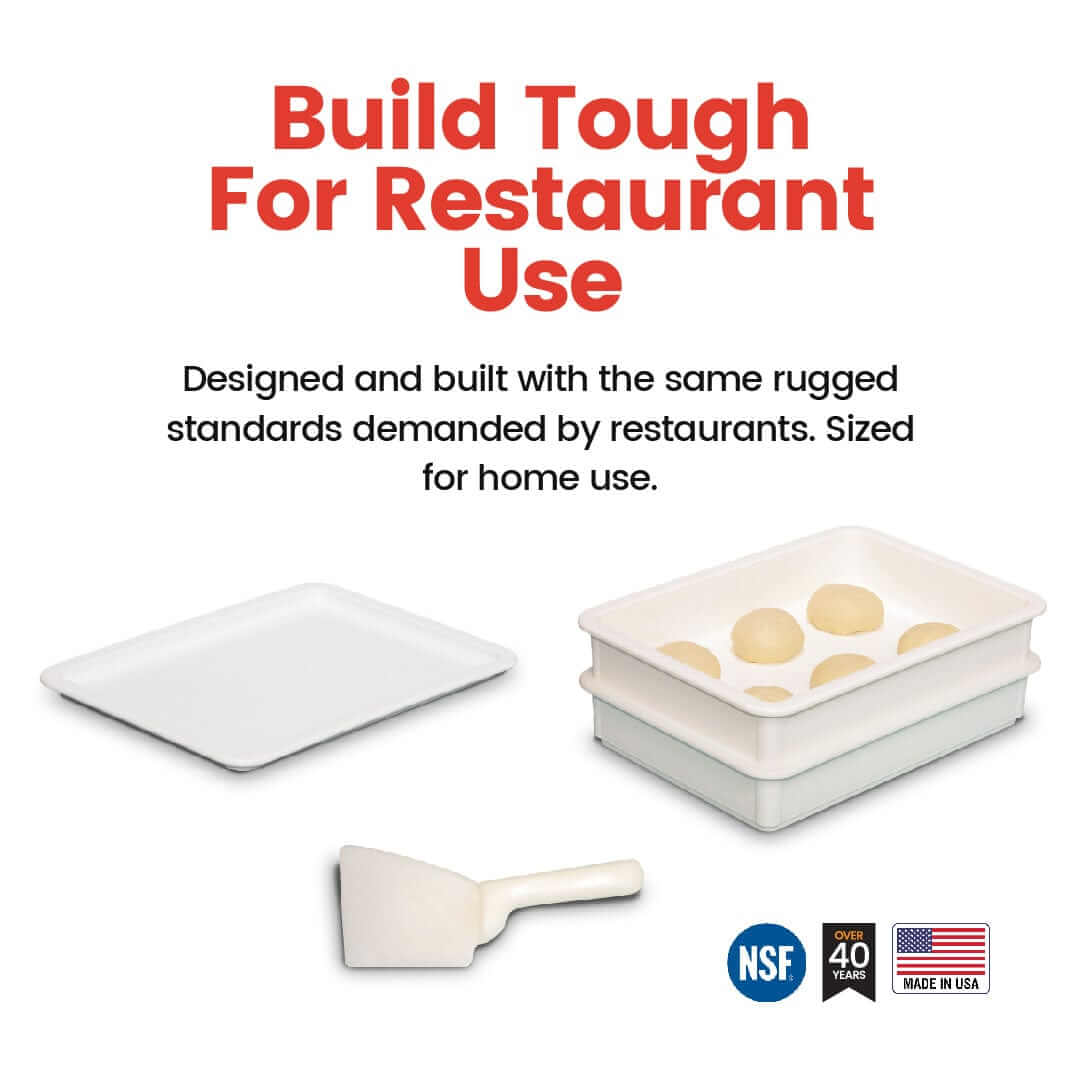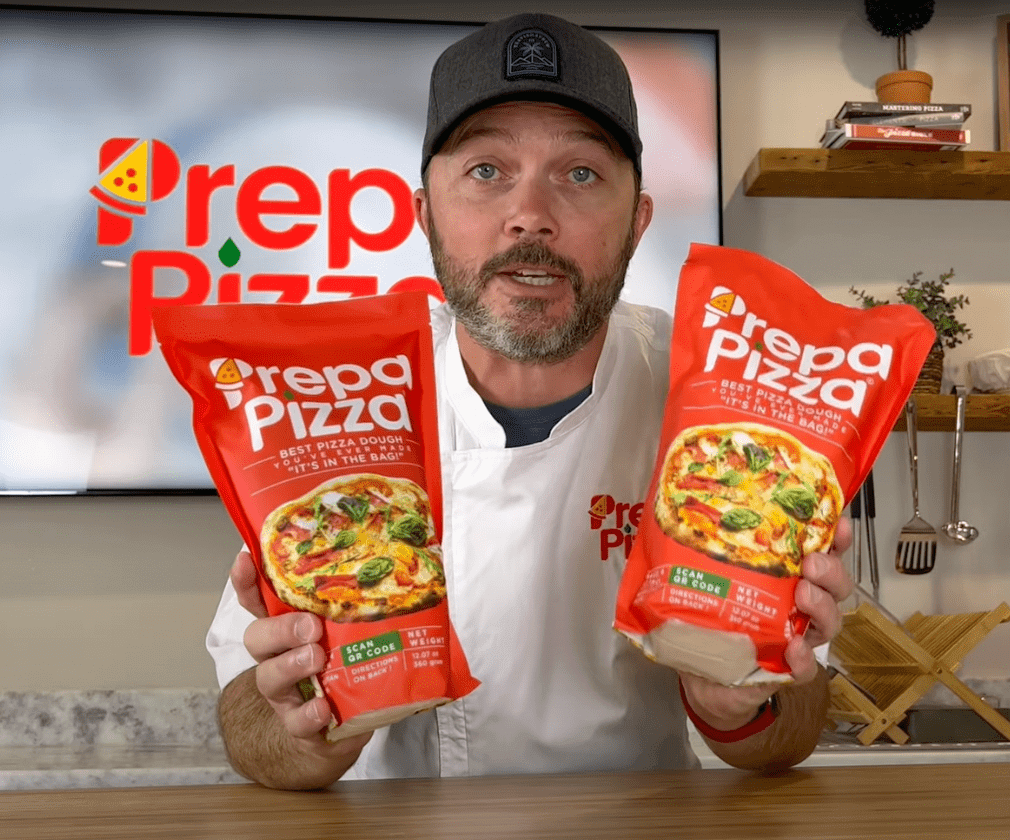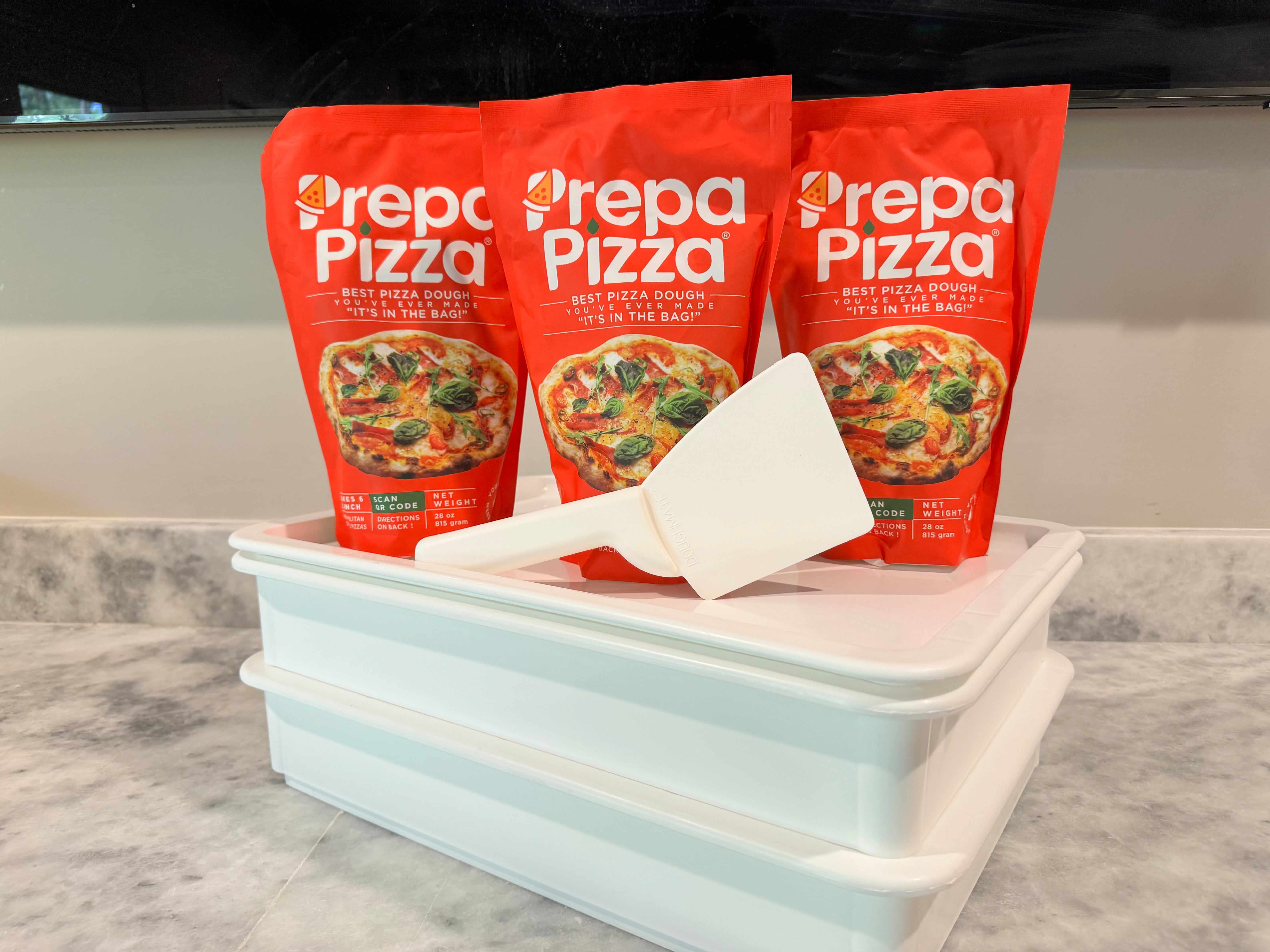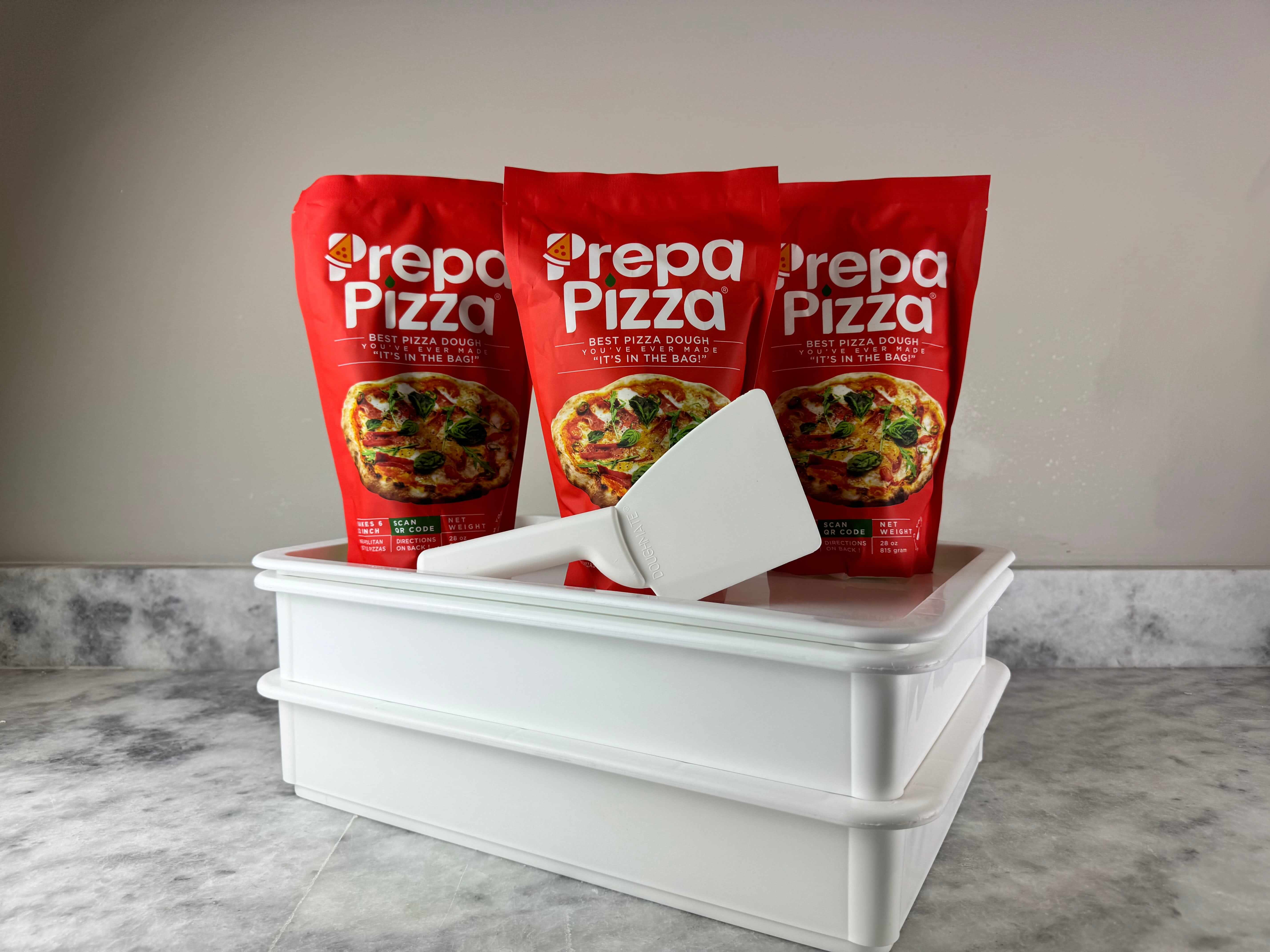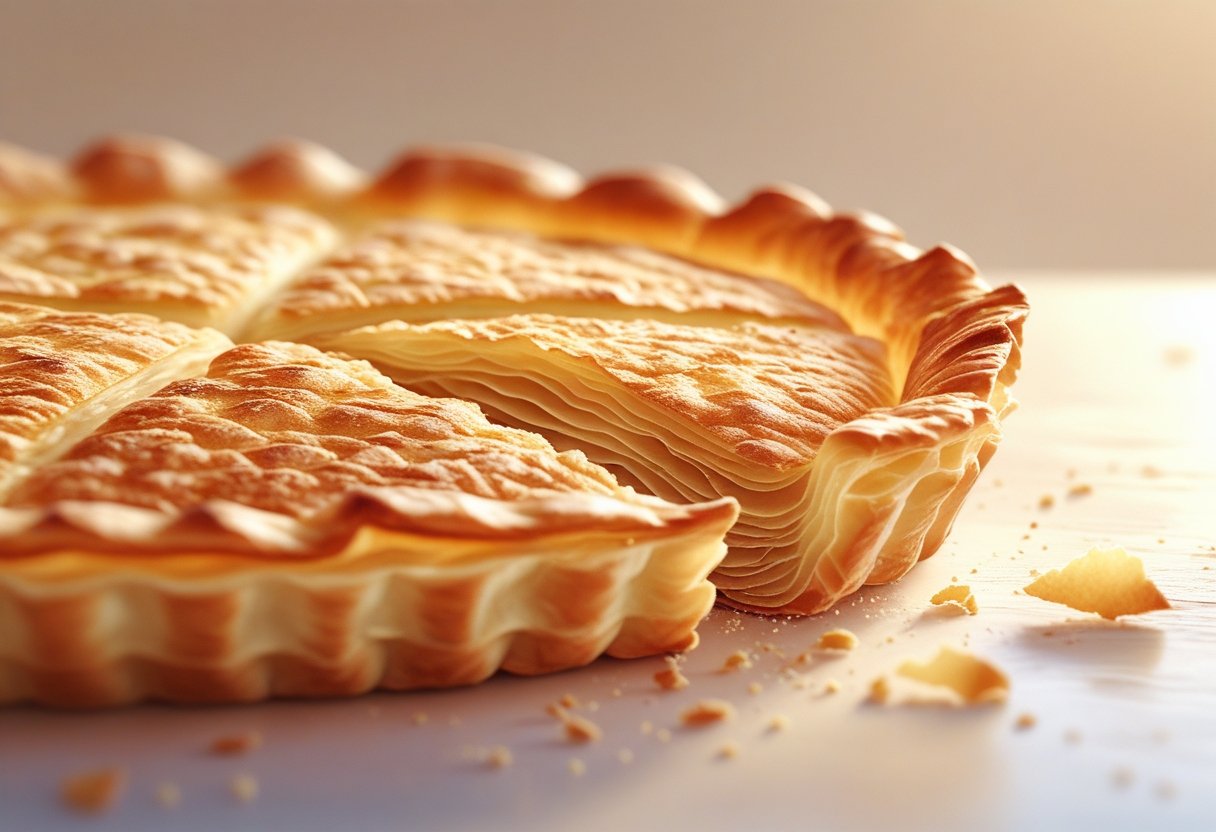
Crust Crispiness Techniques for Perfectly Baked Goods Every Time
Achieving a perfectly crispy pizza crust starts with the right dough and baking technique. The key to crust crispiness lies in controlling moisture, oven temperature, and using high-quality dough like Prepa Pizza’s premade dough, which is crafted with premium ingredients to give you reliable, restaurant-quality results every time. Using this dough simplifies the process and sets a solid foundation for that ideal crunch.
When you use Prepa Pizza’s dough, you’re starting with a product designed to maximize crispiness without sacrificing flavor or texture. Proper heat management and topping choices will further enhance the crust’s crunch. Explore how you can take your homemade pizza to the next level by mastering these critical factors with Prepa Pizza’s premade dough.
Learn more about the quality and convenience of Prepa Pizza’s dough here, and follow along to discover practical tips to get that perfect crisp in your crust every time.
Essentials of Crust Crispiness
Achieving a crispy pizza crust depends on several key factors, including the dough’s formulation, baking temperature, and moisture control. Using a high-quality premade dough like Prepa Pizza’s helps you start with a reliable base, crafted from premium ingredients that support a crisp, golden crust every time. Proper handling and baking techniques then transform that dough into the ideal texture.
Understanding what makes a crust crispy, why texture and structure matter, and the benefits of crispiness will help you avoid soggy pizza crust and consistently produce restaurant-quality results using Prepa Pizza’s dough.
What Makes a Crust Crispy
Crispiness arises primarily from moisture evaporation and the starches in the dough caramelizing during baking. High oven temperatures, typically between 450°F and 500°F, drive off moisture quickly, creating a dry, crunchy surface layer. Prepa Pizza’s dough offers balanced hydration to maintain enough moisture inside while promoting a crispy exterior.
Ingredients and dough preparation also play roles. A lower hydration dough helps prevent sogginess, while gentle handling preserves the gluten structure for a firm yet crisp bite. Additionally, managing toppings with lower moisture content or using oils to create barriers reduce the risk of a soggy pizza crust.
Importance of Texture and Structure
The texture and structure of your pizza crust directly affect the eating experience. A crispy crust has a firm outer shell with a slight chew inside, providing contrast and preventing a limp or soggy base. The gluten network from well-prepared dough like that from Prepa Pizza supports this balance by holding gas bubbles, which create an airy yet structured crust.
Proper dough thickness also impacts texture. Too thin, and the crust can become fragile; too thick, and it can remain doughy inside. You want an even thickness that crisps well without sacrificing structure. This balance helps maintain a crust capable of supporting toppings without collapse or excess moisture absorption.
Advantages of a Crispy Crust
A crispy crust elevates your pizza’s flavor and overall quality. The Maillard reaction, which browns the dough during baking, enhances aroma and taste, enriching your pizza beyond just texture. Additionally, crispiness adds variety to each bite, making the experience more enjoyable.
Using Prepa Pizza’s premium premade dough gives you a consistently crispy foundation, reducing the chance of soggy pizza crust—a common issue that detracts from quality. This crisp base also provides a sturdy platform for a wide range of toppings without becoming soggy or overburdened, allowing you to craft pizzas with both crispness and complexity.
For convenience and quality, consider Prepa Pizza’s premade dough kit, designed to help you achieve this perfect texture every time.
Choosing Ingredients for Maximum Crispiness
To get a crispy pizza crust, you need to focus on ingredient selection that builds structure and manages moisture well. Using the right flour, adjusting hydration precisely, and including the right amount of olive oil, sugar, and salt all play key roles.
Prepa Pizza’s premade dough offers a strong foundation for crispiness because it uses premium ingredients balanced for texture and flavor. You can rely on this dough to provide consistent results while you fine-tune other factors.
Selecting the Right Flour
Flour choice directly affects texture and crispiness. High-protein flours, such as bread flour, are ideal because their gluten content creates a strong, elastic dough. This gluten network traps gases during fermentation for a chewy yet crispy crust.
All-purpose flour can work but typically has lower protein, which means less structure and potentially a softer crust. Semolina, made from durum wheat, adds a subtle crunch and a slightly nutty flavor due to its coarse texture.
Using bread flour or blending bread flour with semolina can give your crust a crisp edge and a firm bite. Prepa Pizza’s dough uses high-protein flour to ensure your crust develops the necessary structure for a crispy finish.
How Hydration Impacts Crispiness
Hydration refers to the water content relative to flour in the dough, usually expressed as a percentage. Lower hydration doughs (around 55-60%) tend to make a denser, crisper crust because the dough holds less moisture.
High-hydration doughs (65% and above) produce open crumb and a lighter texture but can be harder to crisp unless baked at very high temperatures. Too much water creates steam during baking, which softens the crust.
For the crispiest crust, aim for moderate hydration and ensure your dough is rested and handled well to allow gluten to develop. Prepa Pizza’s premade dough balances hydration to provide a great base for crisp baking without excess moisture.
Role of Olive Oil, Sugar, and Salt
Olive oil contributes to browning and a tender, crisp crust by coating flour proteins and limiting excessive gluten development. Adding oil in moderate amounts improves extensibility and creates a slight crunch on the crust surface.
Sugar promotes caramelization, enhancing browning and crisp texture. Even a small amount helps the crust develop a golden-brown color and adds subtle sweetness.
Salt strengthens gluten structure, enhancing dough elasticity and overall texture. It also controls yeast activity, preventing overproofing which can weaken the crust’s ability to crisp properly.
Prepa Pizza dough incorporates these ingredients in balanced proportions, so they support a crispy crust without overpowering the flavor or texture.
Dough Preparation Techniques
Achieving a crispy crust starts with how you handle the dough. Proper kneading, controlled fermentation, and shaping all influence the final texture. Using a premium-quality premade dough like Prepa Pizza’s pizza dough kit helps maintain consistency and quality, giving you confidence in the foundation of your crust.
Prepa Pizza’s dough contains carefully selected ingredients and is crafted for ideal hydration and protein levels. This ensures your crust has the balance needed for a chewy, crispy texture while you focus on perfecting your technique.
Kneading and Gluten Development
Kneading develops gluten, which creates the dough’s structure and elasticity. When you knead, you align gluten strands so the dough can stretch without tearing. This step influences how the crust holds air bubbles, contributing to a light, crispy texture.
Avoid over-kneading, which tightens gluten excessively and toughens the dough, leading to a dense crust. With Prepa Pizza’s premade dough, initial gluten development is already optimized, but gentle additional kneading can improve dough uniformity and texture.
Use your hands or a dough hook to knead for about 8-10 minutes until the dough is smooth and slightly tacky. This makes the dough easier to shape and helps the crust crisp up evenly during baking.
Fermentation and Proofing
Fermentation allows yeast to produce gas, creating air bubbles that lighten the dough. Longer fermentation, such as 24-72 hours in the refrigerator, deepens flavor and improves the crust’s internal texture.
Proofing is the final rise before baking. It ensures the dough is relaxed and ready to stretch without springing back. Under-proofing causes a dense crust; over-proofing results in weak bubbles that collapse during cooking.
Prepa Pizza’s dough is designed for balanced fermentation, but you can enhance crust crispiness by letting it proof at room temperature 1-2 hours before baking. This step improves oven spring and bubble formation, key for a crispy finish.
Forming and Shaping the Crust
How you shape your dough affects bubble retention and crust crispiness. Avoid heavy rolling with a pin, which can deflate air bubbles you want to keep. Instead, stretch the dough gently with your hands to preserve those pockets of gas.
Creating a defined edge or rim traps heat and moisture, encouraging a crispy outer crust while keeping the interior tender. Work with dough at room temperature for ease and control.
If using Prepa Pizza’s dough, the premade consistency reduces risk of tearing or uneven thickness, allowing you to focus on forming a uniform crust that crisps evenly throughout baking.
Baking Methods to Achieve Crispiness
To get a crispy crust, you need to carefully balance heat, surface contact, and baking time. Using the right dough, such as Prepa Pizza’s premade dough made from premium ingredients, sets a strong foundation for great texture. Your oven settings and baking tools then shape how crisp your crust will become.
Here’s how to optimize your oven’s heat and the surfaces you bake on to deliver a crust with the perfect crunch using your oven and quality dough like Prepa Pizza’s premade dough kit.
Oven Temperature and Baking Time
High oven temperature is essential for a crispy crust. Aim for at least 475°F to 500°F (246°C to 260°C) to promote quick moisture evaporation and browning. Preheat your oven fully for 30–45 minutes before baking to ensure consistent heat.
Baking time typically ranges from 8 to 12 minutes at these temperatures, depending on the thickness of your dough and toppings. Shorter baking at high heat helps avoid sogginess while achieving golden-brown color and crispiness. Monitor closely to prevent overbaking, which can dry out your dough unnecessarily.
Adjust baking time if using thicker dough like Prepa Pizza’s kit to maintain a crispy exterior without undercooked spots.
Using Pizza Stones and Steels
A pizza stone or steel improves heat transfer to the crust by absorbing and radiating high, even heat. This helps the dough bake evenly and crisp faster without burning.
Pizza stones are ceramic or cordierite and retain heat well. Pizza steels conduct heat more efficiently and can crisp the bottom crust more rapidly. Place them on the lowest oven rack for direct contact with the dough surface.
Preheat stones or steels for at least 45 minutes to maximize heat retention. This method mimics the intense heat of a pizza oven, elevating your home-baked pizza crust texture significantly.
Alternative Baking Surfaces
If you don’t have a stone or steel, a heavy-duty baking sheet can serve as a substitute. Use an inverted baking sheet preheated in your oven to create a flat, hot surface. This method improves heat conduction compared to a traditional sheet alone.
Applying a light coating of non-stick spray or oil on your baking surface helps prevent sticking while promoting even browning and crispiness. Avoid overcrowding toppings to keep moisture levels low.
Using Prepa Pizza’s quality dough on these surfaces ensures the dough’s structure can hold up, giving you a reliably crisp base without specialized equipment.
For best results with Prepa Pizza premade dough, choose the surface that fits your tools and adjust oven temperature and baking time accordingly.
Learn more about Prepa Pizza’s premium premade dough kit here.
Tips and Enhancements for the Perfect Crust
Achieving a crispy crust starts with a quality dough, and using Prepa Pizza’s premade dough ensures a strong foundation made from premium ingredients. Proper preparation and baking techniques play a critical role in creating that ideal crunch and chew balance. Small adjustments in sauce, toppings, and oven setup can transform your homemade pizza into a crisp, restaurant-quality dish.
Prepa Pizza’s dough is designed to handle high heat and retain structure, helping you master various crust textures from thin crust pizza to Neapolitan styles. Baking on a preheated surface and careful topping choices will help prevent soggy crusts and deliver the crunch you want every time.
Preventing Soggy Bottoms
A soggy bottom crust usually comes from excess moisture. You can prevent this by limiting sauce quantity; a thin layer of sauce is better than soaking the dough. Thick layers trap moisture and slow baking, causing the crust to soften.
Preheating your oven and using a pizza stone or steel heats the bottom of your pizza quickly, promoting a crispy base. If you lack these, try baking the pizza on a preheated cast iron skillet or sheet pan to maintain heat transfer.
Sprinkling cornmeal on your baking surface before placing the dough creates a barrier that helps absorb moisture and prevents sticking, enhancing crispiness. Prepa Pizza’s dough works well with this technique due to its balanced hydration level.
Choosing Sauce and Toppings
The type and amount of sauce and toppings significantly affect crust texture. For best results, use a sauce with less water content, such as thick tomato paste or a sauce simmered to reduce liquid.
Use toppings sparingly, especially watery vegetables like mushrooms or pineapple, which release moisture during cooking. Patting toppings dry beforehand or pre-roasting them can minimize added moisture, aiding crust crisping.
Opt for evenly distributed toppings to avoid concentrated soggy spots. This is particularly important when making a thin crust pizza, where the dough itself has less tolerance for moisture buildup.
Finishing Touches for Extra Crunch
For extra crunch, brush the crust edges with a light coat of oil or garlic butter before baking. This helps create a golden, crispy exterior and adds flavor.
After baking, letting your pizza rest for a few minutes on a cooling rack prevents steam from softening the bottom. If you want an even crisper finish, briefly broil the pizza edges or bottom for 1–2 minutes, but watch closely to avoid burning.
You can also sprinkle coarse cornmeal or semolina on top of the dough before baking. This adds texture and enhances the crisp crust experience without altering flavor.
Styles That Celebrate Crispiness
Thin crust pizza and Neapolitan pizza styles prioritize crispy edges with chewy centers. Prepa Pizza’s dough is versatile, supporting these styles thanks to its restaurant-quality formulation.
Thin crust pizza benefits from very high oven temperatures (475°F to 500°F) and quick baking times, achieving a crisp surface without drying out. Neapolitan pizza calls for slightly wetter dough and high heat but careful topping balance to avoid sogginess while encouraging blistered, crispy edges.
Experimenting with baking surfaces like pizza stones or steels will help you customize crispiness according to your preferred style, using Prepa Pizza dough as a reliable base.
For more details, see expert tips on making crispy pizza crust with a high-temperature oven and proper preheating.
Frequently Asked Questions
Achieving a crispy pizza crust requires managing dough hydration, oven temperature, and baking surface. Using high-quality dough made with premium ingredients lays a solid foundation for a crisp bottom and browned edges. Prepa Pizza’s premade dough simplifies this process by providing restaurant-quality dough ready for baking.
Starting with Prepa Pizza’s premade dough kit ensures consistency in dough texture and flavor, helping you focus on technique. Proper handling and baking methods maximize the dough’s potential for a crispy crust. You can find their Prepa Pizza Dough Kit here.
What techniques can be used to achieve a crispy pizza crust on the bottom when baking at home?
Use an oven temperature of at least 475°F (245°C) for better heat transfer to the dough’s bottom. Preheating your oven fully before placing your pizza inside is essential.
Stretch your dough thinly to allow heat to reach the bottom more effectively. Dust your pizza peel or baking surface with a small amount of semolina or cornmeal to prevent sticking and increase crunch.
What are the steps to ensure a crispy pizza crust using an oven?
Preheat your oven and baking surface, ideally for 30-45 minutes. Roll out or stretch your dough to the desired thickness and avoid excessive toppings that can cause sogginess.
Bake directly on a preheated stone or heavy pan to promote even heat distribution. Finish by baking until the crust turns golden brown and sounds hollow when tapped.
Can a crispy pizza crust be attained without the use of a pizza stone, and if so, how?
Yes, by using a preheated heavy-duty baking sheet or cast iron skillet, you can replicate the heat retention and conduction of a pizza stone.
Make sure these surfaces are in the oven as it preheats to ensure maximum temperature upon placing your pizza. This method retains moisture and improves bottom crust crispiness.
What methods are recommended for browning a pie crust without relying on an egg wash?
Brush the edges lightly with olive oil or melted butter before baking. This adds color and enhances crust browning without affecting texture.
A light sprinkle of fine sugar or cornmeal on the crust edges can also improve browning and add subtle texture. Baking at a high temperature encourages natural caramelization.
What tips can enhance the crispiness of a pizza crust when using a pizza stone?
Always preheat your pizza stone for at least 30 minutes at the highest oven temperature. This ensures the stone absorbs and radiates maximum heat when you place your pizza on it.
Use a pizza peel dusted with semolina or cornmeal to slide your dough onto the stone quickly. Avoid opening the oven door frequently to maintain consistent baking heat and crisping.
What is the best way to cook a frozen pizza to get a crispy crust?
Preheat your oven and place a pizza stone or heavy baking sheet inside while heating. Remove the frozen pizza packaging and slide the pizza directly onto the hot surface.
Bake at a high temperature, around 450-500°F (230-260°C), for 10-15 minutes or until the crust is golden and crispy. Avoid microwaving as it causes sogginess instead of crispiness.




